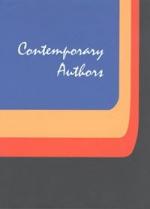|
This section contains 1,348 words (approx. 5 pages at 300 words per page) |

|
SOURCE: Friedman, Norman. “The Wesleyan Poets—III: The Experimental Poets.” Chicago Review 19, no. 2 (1967): 52-73.
In the following excerpted review, Friedman compares Bly's Silence in the Snowy Fields with the work of contemporary, experimental poets and observes the energetic, restless nature of Bly's verse while lamenting it as “too taut” and “too enclosed.”
Silence in the Snowy Fields (1962) is characterized by sharp images, abrupt juxtapositions, loose rhythms, and natural diction. These poems are spoken by a man who is quizzically observant, deeply responsive, and restless and dissatisfied. Techniques and style, therefore, embody poetic vision. Curiously, we are in a world very much like Dickey's—that of the Middle West—and imagery of horses, moonlight, and water predominates, but nothing can be further from Dickey's diffuse wooliness than Bly's concentrated clarity. The influence of Williams appears once again, but it is more real here than in Combs. And yet there...
|
This section contains 1,348 words (approx. 5 pages at 300 words per page) |

|


